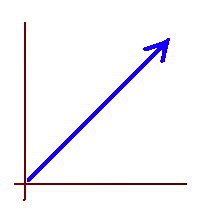The risks of seeking safety in the avoidance of difficult tasksSome students, when evaluating an expression like 8 / 3 - 1, they go:
8 / 3 - 1 = 8 / 2 = 4
When I stop them by asking, "What is going on there?" they sometimes look at me like, "What? I am just doing the operations here." Then I ask, "What about PEMDAS? Isn't there some sort of order we are supposed to follow for the calculations? Are there any parenthesis around the 2 and the 1 in the original expression?" Then they ask, "Oh! You mean, do I have to do the division first?" and I say, "I think that's the rule, going from left to right and doing the multiplications and divisions first, then the additions and subtractions later, isn't it?" then they say, "Oh, yes, that's right!" and proceed to correct the mistake.
For a long time I used to leave it at that but I was always intrigued by that behavior. Why do they do that? They already know the rule, as they have seen it before. They even apply it correctly most of the time. Yet, sometimes they make the same kind of mistake again.
After seeing this happening over and over with several of the many students I have worked with during my tutoring years, I have noticed a pattern associated with this behavior. It is likely to occur more often when the student is under pressure, when they feel they don't have enough time to complete their assignment or to finish studying for the exam. The likelihood of this type of mistake increases also when the students are working with material that is new for them, new formulas, new procedures, or new concepts.
I call this type of mistake "the Psychological Order of Operations," as opposed to "the Logical Order of Operations," which is basically just following the established rules.
The reason why some students make this mistake is because they tend to back away from operations they have not mastered completely, operations they don't fully understand, or that they do not know exactly how to perform. Instead they choose to execute first the operations they are more familiar with and they feel more confident about. Somehow they feel safer that way. For these students, this false safety impulse is strong enough they subconsciously choose to ignore the risk of breaking the rules when changing the prescribed order of operations. Somewhere inside their mind, there is a monologue going on like this: "Rats, a division! That is not an exact division; it's going to be a fraction. How do I deal with that? I don't know. I hate fractions! Oh but look! There is a subtraction over there! I know how to subtract those numbers, that's easy, I can do that and the result will be all right. Let's do that one first."
How do I know this is what they are thinking? Well, when the idea first occurred to me, I started asking them "Why did you do that?" They say, "Do what?" and I explain, "Why did you choose to do the subtraction first, before the division?" They blankly stare at me and say: "I don't know, I forgot PEMDAS." And I insist, "Yes, but why?" To this they usually give me a look like saying, "Geez! Give me a break, will you? It was just a mistake, and I already fixed it!" Then I ask, "In general, for you, what's easier, divisions or subtractions?" and they say, "Subtractions!" Then I ask: "Now, when dealing with divisions, do you prefer the ones where the result is an integer or the ones where the result is a fraction?" They say, "The ones with an integer result." My next question is: "When you have to do two tasks, one of them you are not sure how to go about it and the other you know exactly what to do, which one do you do first?" They say, "I do first the one I know how to do." Finally I ask: "Do you think that could be what just happened here?" pointing to the part of their work where the mistake occurred. They look at the paper, they show an expression of surprise in their face, and they look at me as if thinking, "I'm busted!"
After all this, I tell them: Look, just be aware you sometimes have this impulse to do first what you already know, but this impulse increases your chances of making mistakes when you change the order of operations. Sometimes we can change the order, but not always, you want to be careful about it. Besides, when you find an operation you are not sure how to perform, what you really want to do is to learn more about that operation. Postponing it is not going to make it go away, you are going to have to face it at some point, right? Just pay attention and try to catch yourself when you are making this kind of decision.
They usually like this advice.




